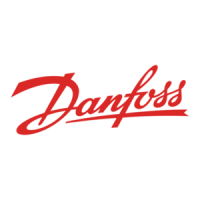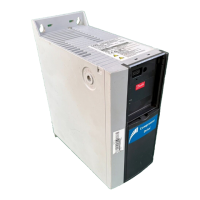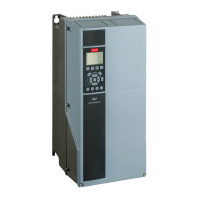3 Conguration
3.1 Congure the CANopen Network
3.1.1 Object Model
Illustration 3.1 Functional Principle of CANopen Nodes
All information accessible via the CAN-bus is stored in the
object directory (OD).
The contents of the OD are organised in Table 3.1.
Object directory
index range
Object type
0000h Not used
0001h–025Fh Data types
0260h–0FFFh Reserved
1000h–1FFFh Communication object area
2000h–5FFFh Manufacturer-specic area
6000h–9FFFh Standardised device prole area
A000h–FFFFh Reserved
Table 3.1 Contents of the OD
For a complete overview of the supported objects in the
OD, refer to chapter 7 Object Directory.
3.1.2 Communication in CANopen
Communication with the frequency converter in CANopen
is achieved via service data objects (SDOs), process data
objects (PDOs), and network management (NMT).
PDOs represent real-time process data with high priority.
PDOs are only available if the node is in operational state.
SDOs represent non-time-critical data and are used to
congure the frequency converter. SDOs are only available
if node is in both operational and pre-operational state.
NMT functions monitor the network stability and include
synchronisation, detection of faults, and emergency
message transmission.
COB-Identiers (ID)
Each communication object has a unique identity (COB-ID)
comprising the function code and the node ID (node
address), see Illustration 3.2.
Illustration 3.2 COB-ID
Conguration Programming Guide
MG92G102 Danfoss A/S © 06/2015 All rights reserved. 7
3 3

